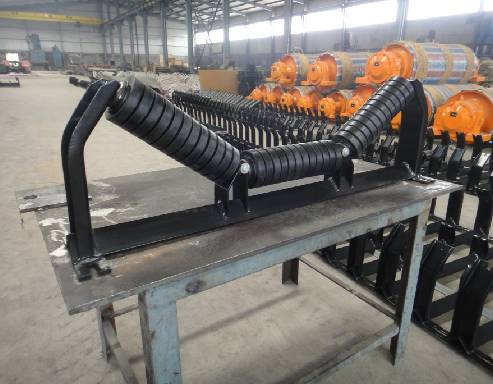 Afrikaans
Afrikaans  Albanian
Albanian  Amharic
Amharic  Arabic
Arabic  Armenian
Armenian  Azerbaijani
Azerbaijani  Basque
Basque  Belarusian
Belarusian  Bengali
Bengali  Bosnian
Bosnian  Bulgarian
Bulgarian  Catalan
Catalan  Cebuano
Cebuano  Corsican
Corsican  Croatian
Croatian  Czech
Czech  Danish
Danish  Dutch
Dutch  English
English  Esperanto
Esperanto  Estonian
Estonian  Finnish
Finnish  French
French  Frisian
Frisian  Galician
Galician  Georgian
Georgian  German
German  Greek
Greek  Gujarati
Gujarati  Haitian Creole
Haitian Creole  hausa
hausa  hawaiian
hawaiian  Hebrew
Hebrew  Hindi
Hindi  Miao
Miao  Hungarian
Hungarian  Icelandic
Icelandic  igbo
igbo  Indonesian
Indonesian  irish
irish  Italian
Italian  Japanese
Japanese  Javanese
Javanese  Kannada
Kannada  kazakh
kazakh  Khmer
Khmer  Rwandese
Rwandese  Korean
Korean  Kurdish
Kurdish  Kyrgyz
Kyrgyz  Lao
Lao  Latin
Latin  Latvian
Latvian  Lithuanian
Lithuanian  Luxembourgish
Luxembourgish  Macedonian
Macedonian  Malgashi
Malgashi  Malay
Malay  Malayalam
Malayalam  Maltese
Maltese  Maori
Maori  Marathi
Marathi  Mongolian
Mongolian  Myanmar
Myanmar  Nepali
Nepali  Norwegian
Norwegian  Norwegian
Norwegian  Occitan
Occitan  Pashto
Pashto  Persian
Persian  Polish
Polish  Portuguese
Portuguese  Punjabi
Punjabi  Romanian
Romanian  Russian
Russian  Samoan
Samoan  Scottish Gaelic
Scottish Gaelic  Serbian
Serbian  Sesotho
Sesotho  Shona
Shona  Sindhi
Sindhi  Sinhala
Sinhala  Slovak
Slovak  Slovenian
Slovenian  Somali
Somali  Spanish
Spanish  Sundanese
Sundanese  Swahili
Swahili  Swedish
Swedish  Tagalog
Tagalog  Tajik
Tajik  Tamil
Tamil  Tatar
Tatar  Telugu
Telugu  Thai
Thai  Turkish
Turkish  Turkmen
Turkmen  Ukrainian
Ukrainian  Urdu
Urdu  Uighur
Uighur  Uzbek
Uzbek  Vietnamese
Vietnamese  Welsh
Welsh  Bantu
Bantu  Yiddish
Yiddish  Yoruba
Yoruba  Zulu
Zulu មករា . 24, 2025 03:17
Back to list
guide rollers for conveyors
U groove guide rollers are a critical component in many industrial applications, designed to support and guide conveyor belts, wires, or materials in motion. Understanding their unique features, benefits, and functionalities can significantly enhance manufacturing processes, improve workplace safety, and increase productivity. Here's everything you need to know about U groove guide rollers from an expert perspective.
The diverse applications of U groove guide rollers speak to their effectiveness and adaptability. Whether used in automotive manufacturing, textile production, or material handling systems, they enhance performance by providing accurate guidance and support. This adaptability underscores their essential role in the present and future landscape of industrial processes. Trust is another critical factor when selecting U groove guide rollers. It's crucial to partner with a reputable manufacturer or supplier known for quality control and exceptional customer service. Establishing trust ensures that you receive a product that meets or exceeds your requirements and that any potential issues are swiftly and effectively addressed. An expert understanding of U groove guide rollers involves recognizing their impact on safety and efficiency. By minimizing the potential for misalignment and reducing the likelihood of system downtime, these rollers contribute significantly to safer working environments. This focus on safety cannot be overstated, as the prevention of accidents and malfunctions is paramount in any industrial setting. For those considering integrating U groove guide rollers into their systems, it's advisable to conduct a detailed assessment of their operational environment and specific needs. Consulting with a technical expert can provide valuable insights into selecting the appropriate size, material, and specifications, leading to optimized performance and longevity. In summary, U groove guide rollers are not just components— they are vital instruments that dictate the smooth and efficient operation of numerous industrial systems. By delivering precision, durability, and reliability, they form the backbone of effective material handling and conveyance. As industries continue to evolve, the role of these guide rollers in facilitating advanced manufacturing solutions will undoubtedly grow, making them an indispensable part of the journey toward operational excellence. Understanding their nuances and applications can provide a competitive edge, ensuring that operations are both productive and sustainable.


The diverse applications of U groove guide rollers speak to their effectiveness and adaptability. Whether used in automotive manufacturing, textile production, or material handling systems, they enhance performance by providing accurate guidance and support. This adaptability underscores their essential role in the present and future landscape of industrial processes. Trust is another critical factor when selecting U groove guide rollers. It's crucial to partner with a reputable manufacturer or supplier known for quality control and exceptional customer service. Establishing trust ensures that you receive a product that meets or exceeds your requirements and that any potential issues are swiftly and effectively addressed. An expert understanding of U groove guide rollers involves recognizing their impact on safety and efficiency. By minimizing the potential for misalignment and reducing the likelihood of system downtime, these rollers contribute significantly to safer working environments. This focus on safety cannot be overstated, as the prevention of accidents and malfunctions is paramount in any industrial setting. For those considering integrating U groove guide rollers into their systems, it's advisable to conduct a detailed assessment of their operational environment and specific needs. Consulting with a technical expert can provide valuable insights into selecting the appropriate size, material, and specifications, leading to optimized performance and longevity. In summary, U groove guide rollers are not just components— they are vital instruments that dictate the smooth and efficient operation of numerous industrial systems. By delivering precision, durability, and reliability, they form the backbone of effective material handling and conveyance. As industries continue to evolve, the role of these guide rollers in facilitating advanced manufacturing solutions will undoubtedly grow, making them an indispensable part of the journey toward operational excellence. Understanding their nuances and applications can provide a competitive edge, ensuring that operations are both productive and sustainable.
Next:
Latest news
-
The Unrivaled Performance of Polyurethane Pulleys in Industrial ApplicationsNewsAug.25,2025
-
The Critical Role of Drum Lagging in Conveyor SystemsNewsAug.25,2025
-
Navigating Industrial Efficiency: The Critical Role of Conveyor PulleysNewsAug.25,2025
-
InIntroduction to Advanced Pulley Lagging SolutionsNewsAug.25,2025
-
Industry Trends in Pulley Lagging TechnologyNewsAug.25,2025
-
Revolutionizing Conveyor Reliability with Advanced Rubber Lagging PulleysNewsJul.22,2025
OUR PRODUCTS





























